July 17, 2023
World Lion Day: Everything You Need to Know About the King of the Jungle
CM Content Team

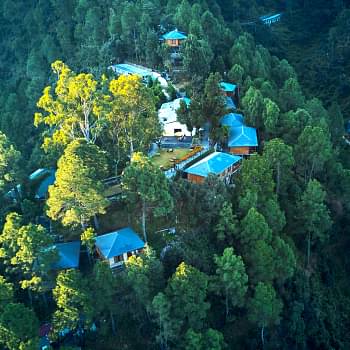
View all
140+
Resorts
July 17, 2023
CM Content Team
World Lion Day, celebrated every year on August 10, serves as a global reminder of the awe-inspiring presence and vital significance of the regal big cats in our world. Lions, often referred to as the kings of the jungle, embody power, grace, and an undeniable aura that has captivated human imagination for generations.
With each passing year, the conservation of lions becomes increasingly crucial as their populations continue to dwindle. With nearly 94 percent of their historic range lost, which once spanned across almost the entire African continent, the lion population has experienced a significant decline.
Therefore, this International Lion Day, we delve into the importance of preserving and protecting these majestic creatures and understanding the reasons because of which their population is decreasing.
Also Read: Know All About The Kingdom Of Asiatic Lions In India
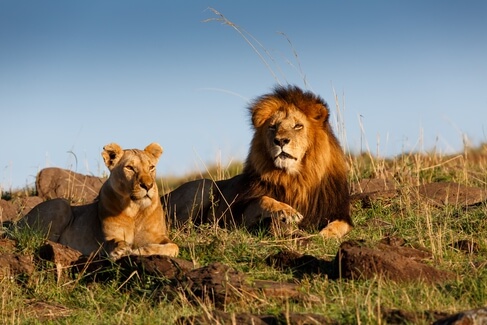
In 2013, conservationists Dereck and Beverly Joubert, acclaimed filmmakers, and National Geographic explorers, conceived and inaugurated World Lion Day.
With an illustrious career spanning over 30 years, the Jouberts have been relentless in their efforts to preserve wildlife species. However, they have placed particular emphasis on safeguarding the majestic lions in their natural habitats.
The Jouberts have collaborated closely with local communities residing near lion territories. They have worked tirelessly to develop innovative safety measures for these magnificent big cats. Recognized globally for their remarkable contributions to wildlife conservation, Dereck and Beverly Joubert continue to inspire and lead the charge in protecting lions and promoting their coexistence with humans.
Also Read: Jungle Adventures: Explore Goa's Best Wildlife Sanctuaries
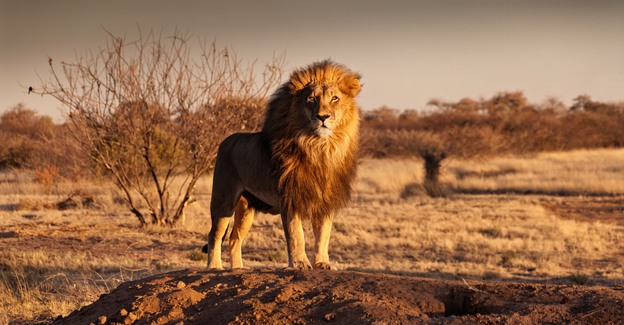
Lions, majestic and iconic creatures, are facing numerous threats that jeopardize their populations and survival in the wild. These threats arise from various factors, including habitat loss, human-wildlife conflict, poaching, trophy hunting, and the illegal wildlife trade.
One of the significant challenges facing lion populations is habitat loss and fragmentation. As human populations expand, lion habitats are being encroached upon by agriculture, livestock grazing, and urbanization. This habitat loss disrupts the natural balance and reduces the available space for lions to roam freely, leading to increased human-wildlife conflict as lions come into closer contact with human communities.
Human-wildlife conflict poses a significant threat to lion populations. As lions come into contact with humans, conflicts arise due to predation on livestock, which often leads to retaliatory killings by affected communities. This not only results in the loss of lions but also perpetuates a negative cycle of animosity between local communities and lion conservation efforts.
Poaching and the illegal wildlife trade also pose grave threats to lion populations. Lions are targeted for their bones, skin, and other body parts, which are sought-after in traditional medicine and even as trophies. The demand for these products drives illegal hunting and trafficking, further depleting lion populations and undermining conservation efforts.
Also Read: Family Fun in the Wild: Best Time to Visit Gir with Your Family
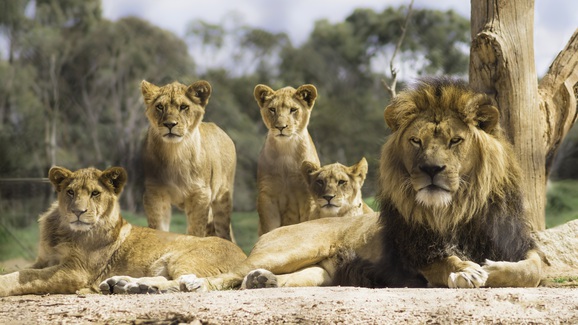
World Lion Day holds immense significance in raising awareness and promoting the conservation of lions. Here are some key reasons why this day is of great importance:
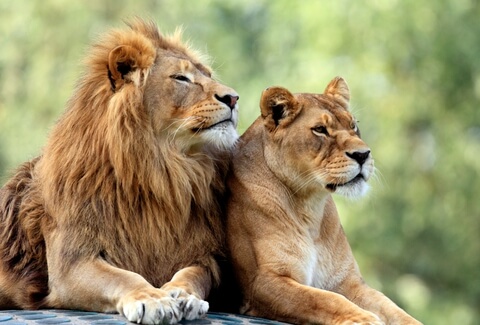
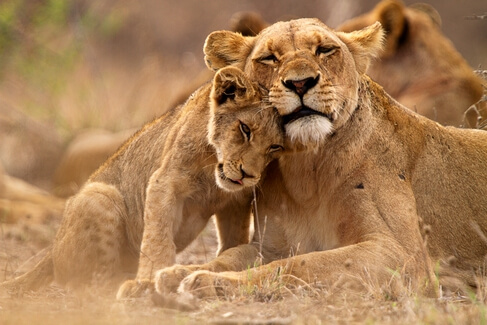
To catch a glimpse of the mighty king of the jungle, the lion, you must explore the mesmerizing lion sanctuaries in India:
Located in the Junagadh district, this lion sanctuary in Gujarat is the most prominent one for the Asiatic lion. It was established in 1965 and covers an area of approximately 1,412 square kilometers. Gir National Park is known for its successful lion conservation efforts and is home to a significant population of Asiatic lions.
Gir Resort in Junagadh by Club Mahindra
Located near Gir National Park, Girnar Wildlife Sanctuary is another important protected area for lions. It spans across an area of about 200 square kilometers and serves as a crucial corridor for lion movement between Gir National Park and other adjoining areas.
The Kuno Wildlife Sanctuary is situated in the Sheopur district of Madhya Pradesh and covers an area of approximately 750 square kilometers. The region consists of a diverse landscape comprising forests, grasslands, and hilly terrains. The sanctuary has been identified as a suitable habitat to establish a second home for the Asiatic lions to ensure their long-term survival.
Situated in the Amreli district of Gujarat, Pania Wildlife Sanctuary is an extension of Gir National Park. It covers an area of around 39 square kilometers and provides additional protection and habitat for lions and other wildlife species.
Mahindra Holidays & Resorts India Ltd. (MHRIL), a part of Leisure and Hospitality sector of the Mahindra Group, offers quality family holidays primarily through vacation ownership memberships and brings to the industry values such as reliability, trust and customer satisfaction. Started in 1996, the company's flagship brand ‘Club Mahindra’, today has over 300,000 members , who can holiday at 140+ resorts in India and abroad.
We use cookies to personalise content and to provide you with an improved user experience.By Continuing to browse this site you consent to the use of cookies.Please visit our cookie policy for further details.

Welcome to ClubMahindra.com In order to provide a personalised experience for you, we use cookies to enable some website functionality. Cookies help us see which articles most interest you; allow you to easily share articles on social media channels; permit us to deliver content personalised to your interests and locations; along with many other site benefits. For more information, please review our Cookie Policy
When you visit any website, it may store or retrieve information on your browser, mostly in the form of cookies. This information might be about you, your preferences or your device and is mostly used to make the site work as you expect it to. The information does not usually directly identify you, but it can give you a more personalized web experience. Because we respect your right to privacy, you can choose not to allow some types of cookies. Click on the different category headings to find out more and change our default settings. However, blocking some types of cookies may impact your experience of the site and the services we are able to offer.
Because we respect your right to privacy, you can choose not to allow some types of cookies and you have the right to withdraw your consent by send a mail to email id [email protected]
These cookies are essential in order to enable you to move around the site and use its features, such as accessing secure areas of the site. Without these cookies, services you have asked for cannot be provided.
These cookies allow us to employ data analytics so we can measure and improve the performance of our site and provide more relevant content to you. These cookies don't collect information that identifies a visitor down to an individual level that is available to us. These cookies are not passing personally identifiable information to any external third party other than in limited cases when we engage a service provider to act on our behalf but who is then unable to use the data for their own purposes.
Performance cookies are generally third-party cookies from vendors we work with or who work on our behalf that collect information about your visit and use of the Club Mahindra website, for instance which pages you visit the most often, and if you get error messages from web pages. These cookies don't collect information that identifies a visitor. All information these cookies collect is anonymous and is only used to improve your overall experience on how the website works. Third party vendors may have access to this data and may use it to improve their overall services and offerings.
Functionality cookies allow a site to remember choices you make (such as your user name, language or the region you are in) and provide more enhanced, personal features. These cookies cannot track your browsing activity on other websites. They don't gather any information about you that could be used for advertising or remembering where you've been on the Internet outside our site.
Third-party advertising and social media cookies are used to (1) deliver advertisements more relevant to you and your interests; (2) limit the number of times you see an advertisement; (3) help measure the effectiveness of the advertising campaign; and (4) understand people's behaviour after they view an advertisement. They are usually placed on behalf of advertising networks with the site operator's permission. They remember that you have visited a site and quite often they will be linked to site functionality provided by the other organization. This may impact the content and messages you see on other websites you visit. If you do not allow these cookies you may not be able to use or see certain these sharing tools content on our website.